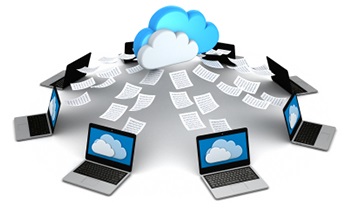Should you be concerned about your software licenses?
The cost of software is often one of the most frustrating parts of a small business’ technology budget. This is especially true because most software packages require individual licenses for each user and the licensing costs can add up fast! In order to avoid these costs it is not uncommon for businesses to turn to alternative sources for their software, including the use of unlicensed software. While this choice may initially seem like a great way to save pennies, the truth is that this places you at risk for heavy fines that will cost far more than the necessary licenses ever would.

Why is it Important to Use Only Licensed Software?
Using unlicensed software is a prime example of Intellectual Property Theft – you are using someone’s work without allowing them an income. Intellectual Property Theft is as serious an offence as any other kind of theft, and as such it needs to be avoided within your business.
It is also important to note that software downloaded without a license places you at additional security risk as well. If you have not purchased a license legally, there is no guarantee that the software will work as intended and the software company is under no obligation to provide any kind of aid if something were to go wrong.
The Dangers of Unlicensed Software in Small Businesses
Small businesses using unlicensed software are placing themselves at a high level of risk. If a software audit of your business shows the use of unlicensed software, you could be looking at hundreds of thousands of dollars in fines. Because software piracy is such an important issue with contemporary business practices, rewards are offered to those who report infractions. This means that if an employee is aware of the use of unlicensed software in your business, they have significant financial incentive to report your company.
Are You Using Unlicensed Software in Your Business?
There are several ways that unlicensed software can be used in a way that puts the business owner at risk. First, all software programs installed without paying any licensing fees at all are illegal – in fact, the only software that you can use legally without a license is software that you have written yourself for personal use! Even freeware or open-source programs will have some sort of licensing agreement required for legal use.
It is also important to check employee computers for any programs that they may have downloaded from the internet – it is common for programs that are available for illegal download to be used for personal use, but if these programs are found on your business computers then it is the owner who will be at risk for legal ramifications.
Additionally, one of the most common ways that businesses are caught using unlicensed software is the use of legally purchased software on more computers than are licensed. It is important to keep track of the number of licenses purchased by your company, and to purchase more licenses as your number of employees grow – having more copies of a program than you are licensed for is still a serious breach of licensing laws.
How to Prevent Unlicensed Software in Your Business
The best way to prevent unlicensed software in your business is to purchase all licences for software used in your business directly from the software companies. Even though this is going to be more expensive up-front than using unlicensed software, the peace of mind is worth it and you will never have to worry about paying large fines if you are caught.
It is also important to educate all of your employees on the importance of only using licensed software on computers owned by your company, and to be aware of any programs downloaded on to employees’ computers.
The best way to make sure that your company is above-board with all of its technological practices is to communicate with your IT maintenance provider. This will allow them to help you identify potential problems in your current software set-up, and help you to establish protocols and solutions for any potential liabilities that they uncover.





